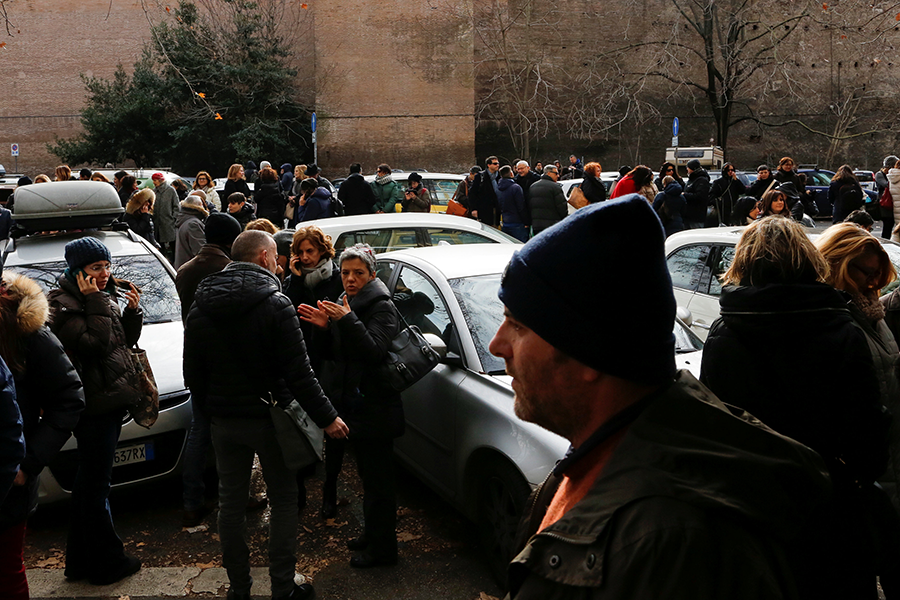Snowbound Italy rattled – but not wounded – by spate of earthquakes
Months after a deadly earthquake rocked central Italy, another wave of powerful earthquakes unnerved the same region Wednesday morning.
On Wednesday three earthquakes, all striking within an hour, shook residents who are still recovering from last year’s deadly tremors, Reuters reports. No serious damage or injuries were immediately reported.
“Luckily it seems there were no deaths,” said Italian Premier Paolo Gentiloni speaking from Berlin Wednesday, adding it was a “difficult day” for Italy.
Rome, with its close distance to the epicenter, which was around 62 miles northeast of the country’s capital, promptly shut down its metro system as a precaution, and evacuated its schools and museums.
The three strongest quakes had a magnitude of 5.3, 5.7, 5.3, and a depth of about six miles, according to the US Geological Survey. More than 50 aftershocks were detected within the hours after the last of the three strong tremors, nine of which were measured above magnitude 4.
The tremors sent residents living near the epicenter, which has also been buried under over 3-feet of snow in recent days, into the wintry streets and fields to avoid possible building collapses.
“Everyone is outside. It's very cold and windy," Lina Mercantini of Ceselli in the Umbrian region, roughly 50 miles from the epicenter told Reuters. "This is totally unnerving. It's never ending. We are all shaking."
The snow storms have already cut power in the Lazio, Marche, and Abruzzi regions, hampering local officials’ initial assessment of damage and possible injuries, according to Reuters.
"Some areas have no electricity because of the snow, so even cellphones don't work," Sante Stragoni, mayor of Acquasanta Terme, said. “The snow is two meters [six feet] deep in some areas.”
The quake comes four months after a tremor struck the same regions in August, killing 300 people and destroying thousands of homes and businesses, and two months after a 6.6-magnitude quake – the biggest one in 36 years in the country – rattled the region.
Amatrice, the rural town that was flattened by the Aug. 24 earthquake where at least 230 people were killed – according to officials, is about 4.3 miles from Wednesday’s epicenter. Its bell tower, which had been badly damaged as its town center was reduced to rubble last year, finally collapsed on Wednesday.
"I don't know if we did something bad. That's what I have been asking since yesterday," Amatrice Mayor Sergio Pirozzi told the AFP news agency. "We have got up to two meters of snow and now another earthquake. What can I say? I have no words."
Since last August central Italy has felt more than 45,000 aftershocks, which have reshaped more than 230 square miles of land and lowered some areas by up to 28 inches, Italy's National Institute for Geophysics and Volcanology said.
This report includes materials from the Associated Press and Reuters.







